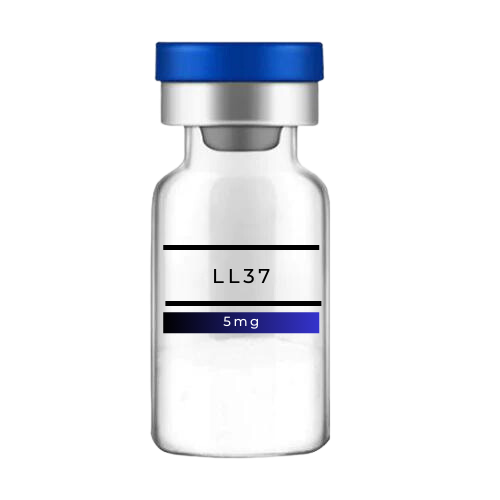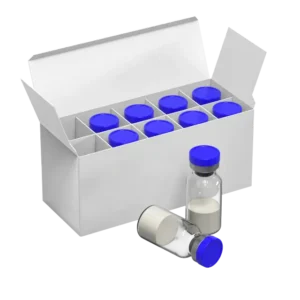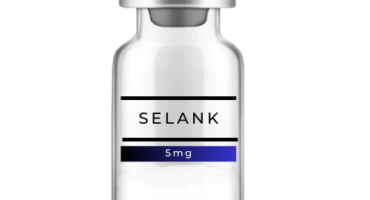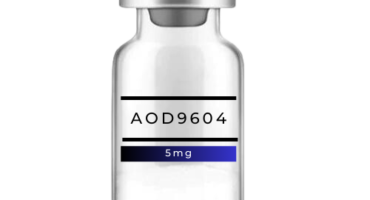The innate immune system plays crucial role in defense against microbes as well as in the initiation of inflammatory responses. Antimicrobial peptides (AMP) are an important evolutionarily conserved defense mechanism against bacterial and fungal invasion of eukaryotic organisms. Hundreds of AMPS are synthesized by epithelial cells and lymphocytes(1). While several classes of AMPs exist, LL-37 is the sole member of the human cathelicidin family. This peptide has piqued the interest of the research community because, in addition to its antimicrobial properties, it carries numerous immune system modulating properties which may contribute to autoimmune disease development.
LL-37 is a 37 amino acid cationic peptide generated by extracellular cleavage of the C-terminal end of the 18 kDa hCAP18 protein by serine proteases of the kallikrein family in keratinocytes(2, 3) and proteinase 3 (PR3) in neutrophils(4). LL-37 is able to form aggregates in solution and lipid bilayers and thus, unlike other antimicrobial peptides, is protected from proteolytic degradation(5). Its positive charge allows it to preferentially associate with negatively charged phospholipid membranes(5). Further, it assumes a primarily α-helical shape during membrane interactions resulting in unilateral segregation of its hydrophobic residues(6). This allows for membrane penetration, formation of transmembrane pores and bacterial lysis (6–8). Cellular membranes associated with cholesterol, such as those found in mammals, are protected from the pore-forming effects of LL-37; however, this effect can be overcome by higher concentrations of the peptide (9, 10).
LL-37 was originally characterized as constitutively expressed in secondary neutrophilic granules(2), However, LL-37 is produced by many cell types including macrophages, natural killer (NK) cells, and epithelial cells of the skin, airways, ocular surface and intestine(10). Regulation of its expression is controlled by inflammatory pathways as well as the vitamin D pathway and endoplasmic reticulum stress(11–13). Studies utilizing mice deficient in mCRAMP, the murine orthologue of LL-37, have demonstrated important antimicrobial roles for this peptide. In the skin, LL-37/mCRAMP is required to prevent invasive bacterial infections(14). Similarly, mice deficient in mCRAMP have increased colonization and invasion of pathogenic bacteria in the colon(15) and are more susceptible to urinary tract infections(16). Furthermore, mCRAMP displays protective effects against Clostridium difficile toxin-mediated colonic and ileal damage, while human LL-37 has protective functions on toxin-A mediated inflammatory cytokine production(17). Intriguingly, mCRAMP has also been shown to have protective effects against influenza infection suggesting it also has a role in the anti-viral response(18).
LL-37 influences inflammatory cell recruitment and macrophage phenotype
Besides its antimicrobial functions, LL-37 also has immunomodulatory roles. Indeed, both pro- and anti-inflammatory functions have been assigned to LL-37 and this may be modulated by the microenvironment and disease background. For example, the presence of 10 µg/ml LL-37 during monocyte to macrophage differentiation promotes a pro-inflammatory response, resulting in downregulation of IL-10 and upregulation of IL-12p40. Further, LL-37 directs the plasticity of differentiated macrophages toward an M1 phenotype(19), suggesting the presence of this peptide has a strong influence on macrophage development and cytokine production. Additionally, LL-37 exposure enhances inflammatory cytokine production driven by IL-1β signaling(20). Anti-inflammatory properties of LL-37 are demonstrated by its antagonistic action on IFNγ, TNF-α, IL-4 and IL-12 responses in various cell types(20–22). A strong anti-inflammatory response through modulation of TLR signaling is also attributed to LL-37 (see below). Thus, the environmental and cellular context in which exposure to LL-37 occurs is important for determining the direction of the cellular response.
A notable feature of LL-37 is that it also has various chemotactic properties. Acting through the formyl-peptide receptor, FPR2, LL-37 induces migration of neutrophils and eosinophils(23). Other G-protein coupled receptors are similarly activated by LL-37 and may contribute to the chemotactic effects of this peptide(10). Transactivation of the epidermal growth factor receptor by LL-37 induces migration of keratinocytes and thus promotes wound healing(24). LL-37 also modulates the production of chemokines to promote chemotaxis. LL-37 is able to induce transcription of CXCL8 alone and synergizes with TNFα-mediated expression of this chemokine(22). MCP-1/CCL-2, a monocyte recruitment factor is secreted in a dose-dependent fashion following LL-37 stimulation(25). Further, TGF-β released from intestinal epithelial cells following exposure to LL-37 also has important chemotactic effects for epithelial cell migration and the wound healing response(26). Thus, LL-37 released at the site of infection or tissue injury is able to promote the inflammatory response and initiate wound repair.
LL37 and toll-like receptor (TLR) pathways
TLRs are widely-expressed receptors which respond to pathogen-associated molecular patterns (PAMPs). Dysregulation of TLR signaling has been reported to be important for the development of autoimmunity(27). Modulation of TLR function by LL-37 can be considered an anti-inflammatory effect. Indeed, LL-37 downregulates signaling through TLR4 via binding of its ligand, LPS(2, 28), as well as through interruption of TLR4 receptor complex function in dendritic cells and macrophages(29, 30). This results in lower levels of pro-inflammatory cytokine production when LL-37 and LPS are present simultaneously. Similar repression of chemokine release has been noted in epithelial cell lines(25). In vivo, mCRAMP represses the response to 2,4-dinitrofluronbenzene-mediated contact hypersensitivity through pathways which require the TLR4 receptor(29).
Alternatively, depending on the sequence of LL-37 and LPS exposure, the effects of LL-37 on TLR4 responses can be pro-inflammatory. When macrophages are primed with LPS prior to LL-37 exposure, there is enhanced release of TNF-α(25). Further, LPS priming of monocytes and macrophages allows for activation of the inflammasome and IL-1β and IL-18 production following LL-37 stimulation(31, 32). In vivo, endogenous mCRAMP does not protect from LPS systemic effects, as both wild-type and mCRAMP−/− mice have similar rates of death in response to LPS-induced shock(33). Thus the ability of LL-37 to have a suppressive effect on LPS effects depends on the timing and context within which cells are exposed.
Other TLR receptor effects are also modulated by LL-37 exposure. LL-37 stabilizes TLR3 ligands and is able to enhance viral responses transmitted via this receptor in TLR3 transfected bronchial epithelial cells(34). In contrast, there is modulation of TLR3 responses in keratinocytes leading to repression of poly-IC mediated upregulation of CXCL10 and CCL5 but enhancement of poly-IC induced CXCL8(22). Flagellin activation of TLR5 is enhanced via LL-37 activation of src-family kinases(35). These observations again support the concept that LL-37 can enhance or abrogate inflammatory signals depending on cell-type and the microenvironment.
LL-37 modulates type I IFN responses
Type I IFNs are an important part of the innate immune response to microbes. They promote myeloid dendritic cell maturation and activation of lymphocytes and natural killer cells (36). Type I IFNs are also elevated in many autoimmune diseases such as lupus, dermatomyositis and psoriasis and likely contribute to disease pathogenesis(37). Synthesis of type I IFNs by plasmacytoid dendritic cells (pDCs) occurs via endosomal recognition of pathogen-derived nucleic acids by TLR7 and TLR9. Cytosolic DNA receptor activation by nucleic acids also results in type I IFN synthesis in other cell types(38). Activation of these pathways by self-DNA is prevented by degradation and inhibition of uptake.
The effects of LL-37 on type I IFN synthesis pathways are secondary to its positive charge and structure. Because of its high affinity for nucleic acids, LL-37 is able to bind DNA and act as a shuttle across membranes for nucleic acid delivery(39). In pDCs, DNA coupled with LL-37 (10µM) promotes access to the endosomal compartment, pDC maturation and TLR9 activation, thereby increasing type I IFN production. Further, LL-37 enhances double stranded DNA uptake by monocytes resulting in TLR-independent cytoplasmic DNA sensing via STING and TBK1 kinase mediated pathways leading to type I IFN production(40). Myeloid dendritic cells also are able to take-up extracellular DNA in the presence of LL-37, although less efficiently than pDCs or monocytes(40). Thus, the interactions of LL-37 with DNA may promote loss of tolerance to DNA and type I IFN synthesis, which may lead to aberrant immune responses following DNA exposure. Similar mechanisms of type I IFN induction have been demonstrated for LL-37 complexed with self-RNA released from dying cells which stimulates TLR7-mediated IFN-α production in pDCs(41).
LL-37 regulates other inflammatory signaling pathways
Activation of the P2X7R, a robust inducer of inflammasome activation in macrophages and monocytes, is considered a unique function of LL-37. This stimulation results in activation of both IL-1β and IL-18 (31, 32). Further, stimulation of this receptor by LL-37 enhances COX2 expression and prostaglandin E2 production via extracellular signal-regulated kinase (ERK) and c-Jun-N-terminal kinase in human gingival fibroblasts(42). Stimulation of IL-8 and CXCL3 release via activation of Src family kinase pathways downstream of P2X7R activation has been described in keratinocytes(35). Activation of the insulin-like growth factor 1 receptor, resulting in activation of the mitogen-activated protein kinase/ERK pathway by LL-37 has also been reported(43).
LL-37 regulates cell death
The effects of LL-37 on cell death regulation may be dependent on the cell type involved and the context in which the stimulation occurs. Activation of caspases 3 and 8 and induction of apoptosis in neutrophils is inhibited by LL-37(21). Higher doses of this peptide induce necrotic cell death in neutrophils, possibly secondary to overcoming inhibitory effects of membrane cholesterol on LL-37 pore forming abilities. Epithelial cells such as keratinocytes are also protected from camptothecin-induced apoptosis by LL-37 upregulation of COX-2(44). Additionally, intestinal epithelial cell cultures are protected from TRAIL-mediated apoptosis when pre-incubated with LL-37(26). Other cell types are more susceptible to pro-apoptotic effects of moderate doses of LL-37, inducing primary airway epithelial cells and osteoblasts(45).
| Weight | 1 lbs |
|---|---|
| Dimensions | 1 × 1 × 1 in |
| MG | 20mg – 2mg vials x 10 |





